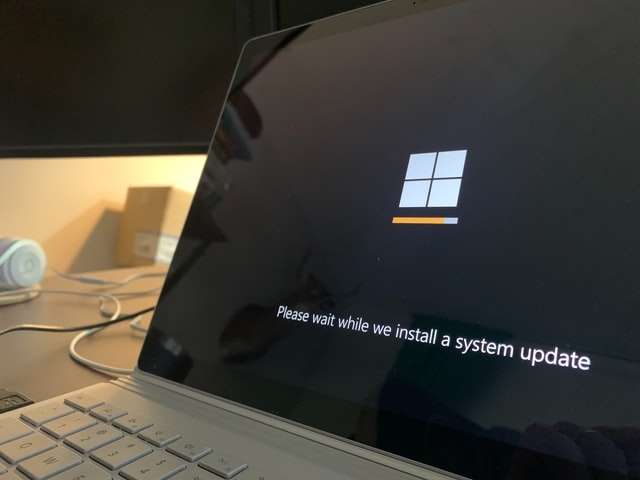The number of online health records being stolen or lost has been increasing every year despite the policies and efforts put in place by healthcare organizations. Studies conducted by HIPAA found that more than a million records were breached in January alone.
The nature of electronic health records makes the effects of a breach potentially damaging. If electronic health records are sold to the market by a hacker, the consequences can be enormous. Research studies show that electronic health records can sell really high in the black market.
With these facts in mind, we will share with you a few tips that you can use to secure electronic health records.
1. Perform regular risk assessment tests
Hackers are keeping up with the trends and changes that are taking place in the health care sector. Therefore, you need to ensure that your health care system is continuously evolving to minimize threats and risks.
By performing risk assessment tests, you’ll identify and assess the areas you are vulnerable to and organize information based on the risk levels. This test should not be performed once every year but regularly. To stay on top of things and ensure that your IT environment is safe, you should perform these assessments as frequently as you can.
2. Update your systems regularly
The majority of cyber security attacks can bring disasters by exploiting out-of-date medical equipment.
Millions of people worldwide will be surprised to learn that most hospitals and health organizations run on standard operating systems like Windows and Linux. And this makes them highly vulnerable to attacks like anyone else.
One of the most effective techniques to deal with hackers and cybercriminals is regularly updating your software and the devices you normally use.

3. Check and clean up user devices
In the healthcare industry, Bring Your Own Device is a popular concept.
Healthcare organizations should not allow anyone to access patient data from a personal device. Virtual computers are ideal for this task. However, they usually extend healthcare budgets due to high implementation costs.
If you are used to the Bring Your Own Device concept, there are simple ways that you can use to minimize vulnerabilities in your system. You should consider using Mobile Device Management solutions to encrypt data accessed on smartphones, delete data in case the device is lost or stolen, and separate professional and personal data, to name a few.
4. Audit and monitor
One of the biggest potential threats in the healthcare industry that stakeholders fail to address is insiders.
Employees with the privilege to access sensitive information are usually the cause of data breaches which can be costly in the long run. Insider threats can be accidental or malicious. And it can go unnoticed for several weeks or months since it does not intrude or interfere with the functioning of the system.
One of the best ways to solve this issue is by ensuring that managers continually monitor activities and report unauthorized or suspicious changes quickly. Also, third-party audit solutions can help IT teams boost the security of their systems through proactive monitoring, auditing, and alerting everyone on any changes made to the system. This will allow users to understand where sensitive data is hidden, who can access it, and the changes that can be made to it.
5. Clean-up unnecessary information
In most cases, organizations collect, store and process vast amounts of information. Hackers can use stale accounts to access this vast amount of data. Most compliance organizations require stakeholders in health systems to review and do away with unnecessary patient data for the security of the patient.
You need to classify data to separate general and sensitive data. Keeping your systems and databases clean can significantly minimize the chances of data breaches.

6. Encrypt data
Patient data should be encrypted regularly. This task can be performed by a certified HER professional.
While encryption is a critical practice, organizations should not rely solely on this practice or on technical solutions such as installing firewalls and antivirus programs to protect patient data. The weakness of encryption is that it largely focuses on preventing access to the system. Since human-related factors cause most security breaches, therefore, security training can contain different kinds of violations.
7. Back up data off-site
Hospitals and health organizations that use a client-server system need to have backup both onsite and offsite in case things go south.
An offsite data backup is essential for security purposes and recovery in case of natural disasters. Practices must maintain off-site copies of financial information, including general ledgers, billing systems, and payrolls.
A cloud-based vendor can also help health organizations in backing up electronic health records. Hospitals and organizations with client-server systems should save health records on tape and transfer them from the site at least once every day.

8. Authenticate users
Most health organizations have platforms that authenticate users with a username or login name and a password.
Health organizations should encourage users to change their passwords regularly for hackers to have a hard time. Passwords should be changed every sixty to ninety days. Also, health practices should adopt two-factor authentication. The two-factor authentication method uses a password and biometric identification such as fingerprints that only authorized personnel can provide.
9. Get agreements
Practices should sign business agreements with all parties that they share health information. These agreements are used to safeguard health records.
Health organizations don’t have to analyze the security of business associates. These agreements will help stakeholders understand the importance of preserving patient records.
Conclusion
One of the top priorities of any health organization or practice should be the protection of patient records. Since the number of stolen or lost records has been on the rise every year, all stakeholders need to use the tips discussed in this post.
Author Bio:
Eliza Sadler is a professional journalist with extensive experience, 4 years. She also works as a freelancer and writes a lot of articles for buy dissertation uk and best essay writing services. She always focused on doing quality work to achieve her goals and objectives. Eliza is fascinated by the ability to create original works that meet high standards.
Feel free to connect with her on email.

